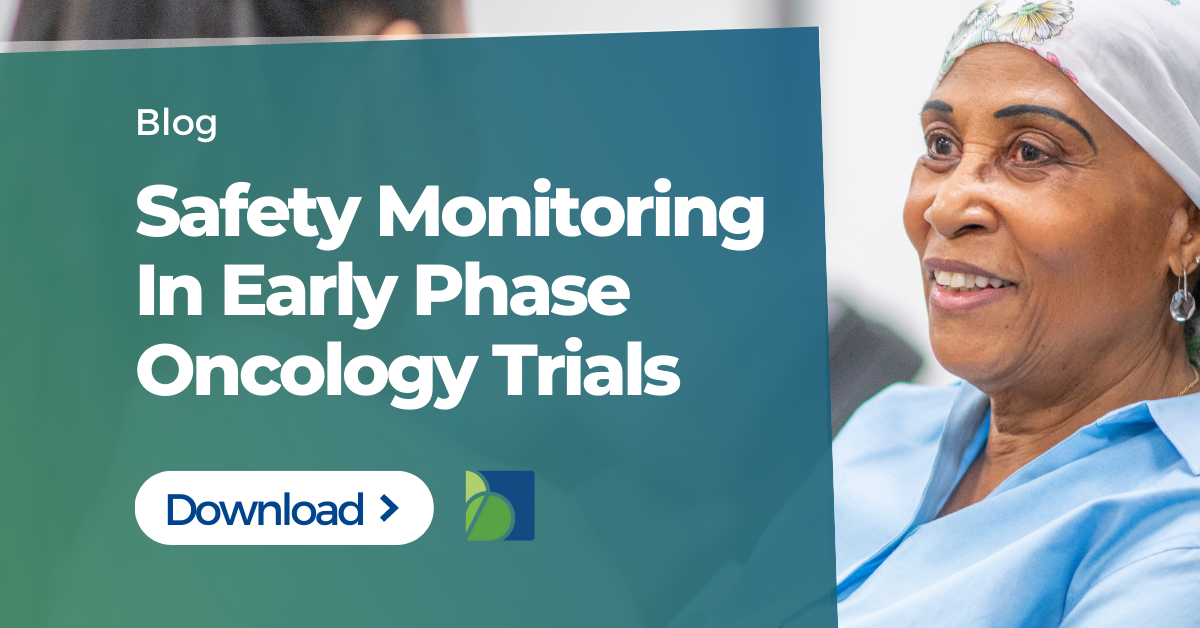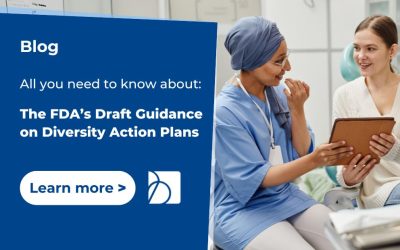Regulations for Safety Monitoring in Early Phase Oncology Trials
Like for all clinical trials, the International Council for Harmonisation of Technical Requirements for Pharmaceuticals for Human Use (ICH) Efficacy 6 (E6): Good Clinical Practice (GCP) guidelines apply to early phase oncology trials. The European Medicines Agency (EMA) has published its own GCP guidelines, as well as specific guidelines for strategies to identify and mitigate risks for first-in-human (FIH) and early clinical trials with IMPs. Furthermore, the EMA Committee for Medicinal Products for Human Use (CHMP) has published guidelines specific for data monitoring committees of clinical trials.
Institutional Review Board & Data Safety Monitoring Committee
In general, at a clinical trial site, the Institutional Review Board (IRB) is responsible for reviewing and approving the clinical trial protocol and the Data and Safety Management Plan (DSMP). The IRB consists of medical professionals with extensive oncological experience in oncology trials. Early phase oncology trials and most phase III clinical trials often also require a Data and Safety Monitoring Board (DSMB) or a Data Monitoring Committee (DMC). The DMC is the relevant body that reviews the trial safety data with the frequency described in the DSMP, which determines whether stopping rules (see below) apply. The DMC also has the authority to stop a trial if the medicinal product is so beneficial that it is deemed unethical to deny other patients access to it.
Study Design & Safety Aspects for Safety Monitoring in Early Phase Oncology
Phase I oncology trials are typically aimed at studying the safety aspects and toxicity of the investigational medicinal product (IMP) and determining the dose ranges for subsequent phase II trials. Often these studies are first-in-human (FIH) patient trials, as the toxic qualities do not justify exposing healthy individuals to the IMP. Usually, a dose-escalation design is used, in which a cohort of patients receives a predetermined dose of the IMP. The starting dose is determined by pre-clinical information from animal experiments and in-vitro studies, including pharmacokinetic and pharmacodynamic (PK/PD) characteristics, toxicological profiles and metabolic behaviour. To ensure safety, this dosage is usually multiplied by a safety factor. If the starting dose does not cause any serious side effects, the dose is increased for the next cohort of patients. This continues until the patients experience dose-limiting toxicity (DLT) and until the maximum tolerated dose (MTD) is determined. In the dose-escalation stage, there is also particular attention to the relation between the dosage and the reporting of side-effects, and whether this relationship is linear or non-linear.
Once a dosage is found to be safe, with limited or no side effects, and preliminary data show that the IMP is also effective, the investigators will move on to phase II trials. Phase II trials focus on the efficacy of the IMP, but often have toxicity as a secondary endpoint. It is estimated that 48.8% of phase I oncology trials continue towards phase II.
Data & Safety Monitoring Plan
To conduct clinical trials, investigators need to establish a Data and Safety Monitoring Plan. The DSMP contains general information about the study and the study goal and describes which persons and institutions are responsible for safety aspects.
Medical Monitoring & Detection of Adverse Events
The medical parameters that you will monitor should be described in the DSMP, as well as the frequency and the duration of medical monitoring. Medical monitoring typically includes checking vital signs, physical examination, ECG analysis, respiratory function tests, general neurological assessment and testing physiological and clinical blood markers. Since oncology trials inevitably concern very sick and vulnerable patients, the clinical protocol should describe what clinical abnormalities are to be expected from the disease in question and what abnormalities should be monitored as a result from the administration of the medicinal product. In addition to clinician-led medical monitoring, patient self-reporting can be considered an additional source to detect AEs. The duration of medical monitoring should continue for a determined period after the trial, especially if the IMP influences specific medical parameters for a prolonged period. A protocol should also be present for the occurrence of adverse events, describing medical procedures that should be followed, what treatment options are available and who is responsible for conducting this.
The DSMP also describes how frequently the safety data from a cohort is reviewed. More frequent analysis allows for a quicker intervention if serious AEs occur due to the oncology product. Protocols to ensure data quality and accurately monitor AEs during the trial have to be defined. Based on this data, the DMC decides whether to continue or discontinue early oncology trials and therefore clear decision-making criteria have to be defined. This includes clearly defined stopping rules.
Moreover, a communication plan between the different stakeholders – i.e. the investigators, sponsor, site staff and medical staff, patients, IRB, DMC, and competent authorities (CAs) – should be established so that you can take swift action in case of the occurrence of serious AEs. Part of the communication is also the informed consent form, where patients are explained the nature, benefits and risks, and procedures of the trial.
Stopping Rules in Safety Monitoring in Early Phase Oncology
Stopping rules are unambiguously defined rules that determine whether you should temporarily or entirely halt a clinical trial. They are limits of acceptable side effect rates within patient cohorts or within a trial. This is especially important for oncology trials since high rates of morbidity and mortality can already be expected due to the nature of the disease. You can define stopping rules based on frequentist approaches or a Bayesian approach where prior information is used. With both approaches, a limit for the rate of dose-limiting toxicity events is set for specific cohort sizes. This allows for continuous stopping boundaries in phase II trials, where the rate of AE occurrence is not just considered after a set number of enrolled patients, but continuously where the rate of AEs is compared to the rate defined by the stopping rules specific for that cohort size. This requires collecting and reviewing aggregate toxicity data and a relatively more frequent review of safety data. You should define stopping rules for individual subjects (the number of AEs), a cohort, and the overall trial.
Risk-Based Monitoring
Early phase oncology trials are unique in the sense that they often do not involve healthy control groups, but rather the standard treatment is compared to a novel treatment. Trials, therefore, often include patients that do not respond to the standard treatment and are more likely to have severe morbidity and higher mortality rates. For these reasons, oncology trials generally also have a longer duration than clinical trials for other diseases. However, oncology trials often follow an accelerated approval pathway or priority review, which results in time pressure to assure the safety aspects of the trial. Therefore, risk-based monitoring (RBM) principles are usually incorporated in the safety monitoring of clinical trials. This applies to, for example, selection criteria for patients, the detection strategy of AEs and the determination of DLT and starting doses. A correct data collection and dynamic analysis approach of (aggregate) safety data is crucial to an effective RBM strategy. It allows for quick detection of outliers, deviations, or abnormalities from normal ranges within the study and allows for comparing different trial sites.
Concluding Remarks
Early phase oncology trials are generally more complex than ordinary early phase clinical trials because they involve special patient groups. Regulation is also more complex, for instance, requiring a detailed data and safety monitoring plan and an extra supervisory board to guarantee the safety of the trials. For these reasons, it is good practice to consult with an experienced CRO who can offer guidance with study design, drafting protocols, medical monitoring, and data and safety monitoring plans. An experienced CRO also has a network of qualified clinical trial sites, where GCP training and IMP handling is assured, and where experienced CRAs are present.














